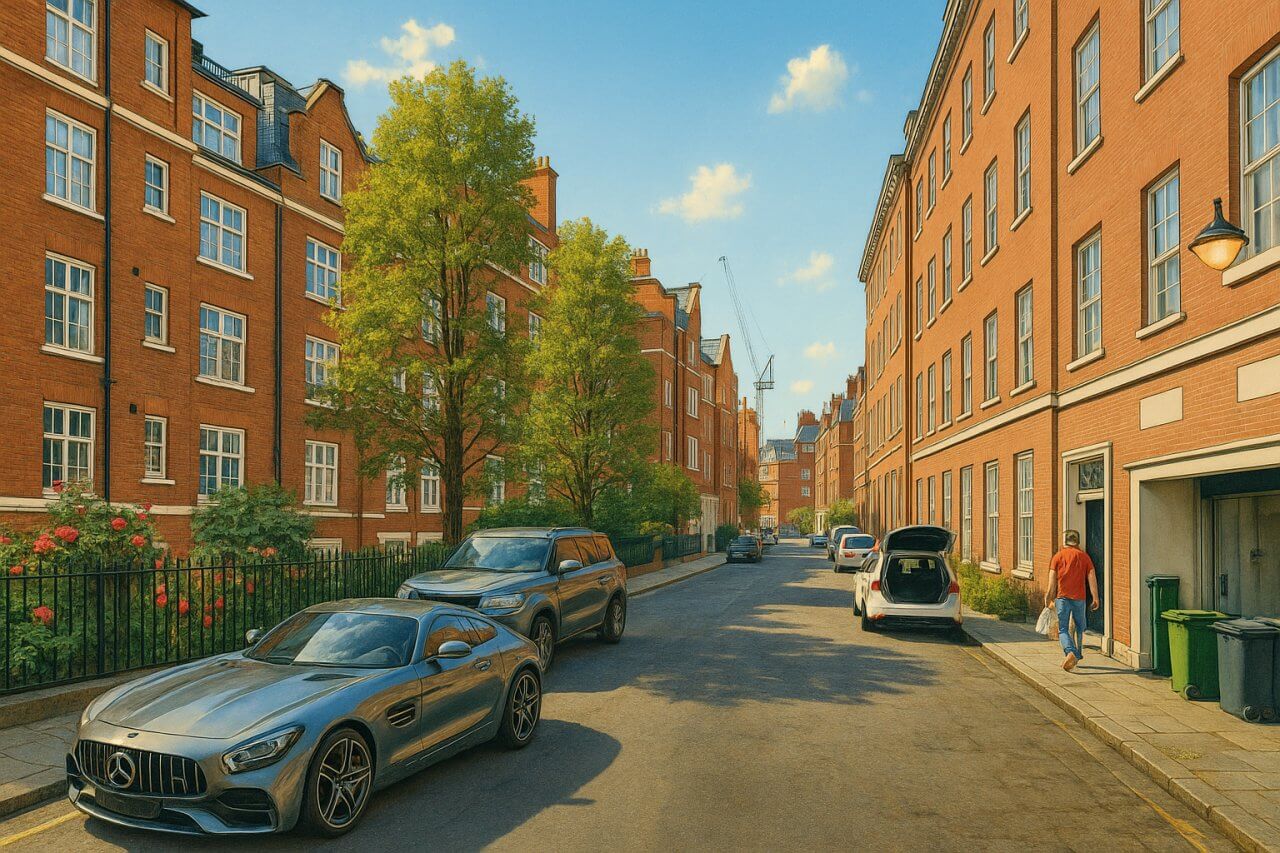
George Yard, London
George Yard is a small but historically rich passageway tucked between Balderton Street and Duke Street in the heart of Mayfair, part of the City of Westminster in London. Narrow, discreet, and largely pedestrianised, George Yard is easy to overlook—but those who do notice it are rewarded with a glimpse of old-world charm amidst a district known for wealth, fashion, and fine living.
Street Description and Surroundings
George Yard runs east-west for just over 100 feet (about 30 metres), forming a quiet corridor between two more prominent Mayfair streets. On its western end, it begins at Balderton Street, a stone’s throw from the high-end shops of Oxford Street. To the east, it spills out onto Duke Street and Duke's Yard, both of which are dotted with art galleries, designer boutiques, and stylish eateries.
The street is paved with traditional stone slabs and flanked by low-rise brick buildings with period façades, many of which date back to the 18th and 19th centuries. A walk along George Yard is serene and almost cinematic—free from the noise of traffic, framed by softly lit shopfronts, private offices, and the occasional mews-style entrance.
History of George Yard
The name “George Yard” likely dates back to the Georgian period, when it was common for alleys and yards to be named after the ruling monarch. In this case, the street could honour either King George I or George II, placing its origin in the early to mid-18th century. As part of the original development of Mayfair into an upscale residential quarter in the 1700s, George Yard would have functioned as a service route or small access way for the larger surrounding properties.
Despite its modest scale, George Yard appears on old parish maps, indicating that it has been part of Mayfair’s layout for well over 200 years. Over time, its use shifted from residential support to small-scale commercial operations, and today it houses a mix of private offices and luxury retail back entrances.
Nearby Attractions and Points of Interest
Though George Yard itself is quiet and understated, it is centrally positioned amid some of London’s most prestigious sights and destinations. Just around the corner lies Grosvenor Square, the heart of American diplomatic history in London, and Selfridges department store is a short walk north on Oxford Street. The Royal Academy of Arts, Berkeley Square, and the Mayfair Gallery District are all within a five- to ten-minute stroll.
Nearby eateries include Michelin-recommended restaurants, stylish cafes, and hidden cocktail bars, making George Yard a strategic detour for those in search of Mayfair’s quieter luxuries.
Property and Real Estate
Residential opportunities on George Yard itself are limited, given its size and zoning, but nearby properties in Mayfair command some of the highest prices in London. As of Q2 2025, luxury flats in the area typically range from 900 to 1,800 sq ft (approximately 84 to 167 sq metres).
Sale prices are generally in the range of £2.5 million to £8 million depending on floor space, amenities, and historical character. Rental prices for comparable properties hover between £6,000 and £15,000 per month1. Properties around George Yard often feature period exteriors, concierge service, high ceilings, and designer interiors.
Transport Links
London Underground
George Yard is exceptionally well-connected for a street of its size. The closest London Underground stations are Bond Street Station and Marble Arch Station. Bond Street serves the Central, Jubilee, and Elizabeth lines, offering rapid east-west and north-south access across the city. Marble Arch, just a few minutes further west, also serves the Central line.
Bus Connections
The nearest bus stops are located along Oxford Street and North Row. These provide connections to dozens of routes including east-west services like the 10, 23, 25, and 390 buses. Both day and night services run frequently, making George Yard easily reachable by public transport at nearly any hour.
Fun Fact
Despite its understated appearance, George Yard has occasionally made its way into art and literature. In the 20th century, it was briefly mentioned in travel memoirs as a “hidden detour” for those wandering Mayfair, and it has featured in the backdrop of several period dramas and films looking to evoke the atmosphere of old London streets.
Quick Facts
- Location: Between Balderton Street (west) and Duke Street & Duke's Yard (east), Mayfair, City of Westminster
- Character: Pedestrianised lane with historic charm, lined with period buildings and boutique back entrances
- History: Dates to the Georgian period, likely named after King George I or II
- Nearby Attractions: Grosvenor Square, Selfridges, Royal Academy of Arts, Mayfair art galleries
- Property Prices (2025): £2.5M–£8M for flats; rentals from £6,000/month
- Nearest Tube Stations: Bond Street (Central, Jubilee, Elizabeth lines); Marble Arch (Central line)
- Nearest Bus Stops: On Oxford Street and North Row, with extensive day and night services
- Fun Fact: Featured in period films and memoirs as a hidden gem in Mayfair
References
Map of George Yard, London
 Painting of George Yard, London
Painting of George Yard, London